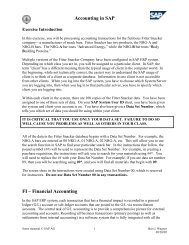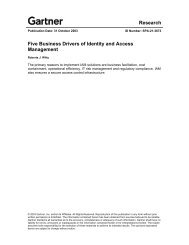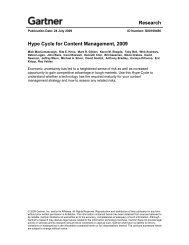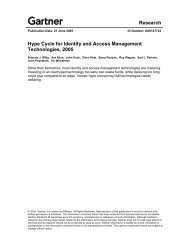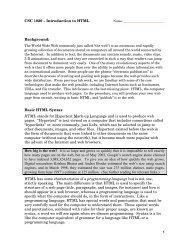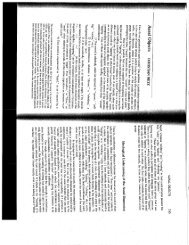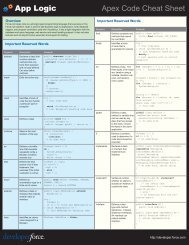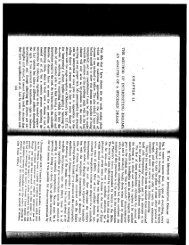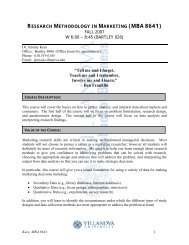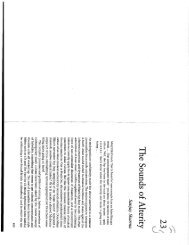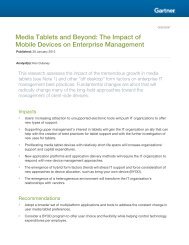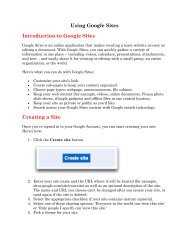Content Management Framework
Content Management Framework
Content Management Framework
You also want an ePaper? Increase the reach of your titles
YUMPU automatically turns print PDFs into web optimized ePapers that Google loves.
<strong>Framework</strong> • 7<br />
content management environment and the structure<br />
of the underlying repository, the architect<br />
may manage either an ad hoc set of terms or a<br />
formal taxonomy or information schema encapsulated<br />
in a controlled vocabulary. The information<br />
architect is responsible for relating the categorization<br />
criteria to the business purposes of the<br />
content being managed.<br />
For the compose/stage step, important features to<br />
consider are factors that affect library services, process<br />
automation services, content categorization services,<br />
and content collaboration services.<br />
Library Services. The core capabilities for composing/staging<br />
content within a content management<br />
system revolve around the following library services:<br />
• Versioning. Versioning helps track multiple<br />
versions of content components.<br />
• Locking (Check-In/Check-Out). Locking ensures<br />
that when one person or process has<br />
checked out a content component, other people<br />
and processes cannot overwrite the item without<br />
prior notification and authorization.<br />
• Editioning/Rollback. Editioning/rollback provides<br />
the ability to revert to a prior version of a<br />
content component.<br />
• Rendition <strong>Management</strong>. Rendition management<br />
provides the ability to transform and manage<br />
content components into different renditions—such<br />
as separate file types or natural language<br />
versions—based on system-derived attributes<br />
or other kinds of metadata.<br />
• XML Component <strong>Management</strong>. XML component<br />
management provides the ability to recognize<br />
the XML-tagged content components<br />
within XML documents as discrete entities.<br />
• Virtual <strong>Content</strong> <strong>Management</strong>. Virtual content<br />
management provides the capabilities to access<br />
external content repositories and manage the<br />
metadata that describe this external content<br />
within the context of the central repository.<br />
Process Automation Services. Process automation<br />
is an end-to-end workflow capability that spans the<br />
four steps of our content management lifecycle as an<br />
integrated business process. Process automation services<br />
should provide the ability to automatically aggregate<br />
content from external information sources<br />
and incorporate it into a repository, as well as the<br />
ability to syndicate content to remote applications<br />
and repositories in which it is used.<br />
<strong>Content</strong> Categorization Services. As content components<br />
are composed and staged for distribution,<br />
they need to be categorized by various criteria.<br />
Sometimes the categories are automatically provided<br />
by the underlying content management system—<br />
such as the date last modified, or whether the content<br />
component is approved for distribution. Sometimes<br />
the categories are related to specific topics, such as<br />
keywords associated with the key concepts contained<br />
within particular paragraphs of a text document.<br />
Often times, the terms used to categorize content<br />
are related to a controlled vocabulary list of predefined<br />
terms, which can be further defined in a thesaurus<br />
or schema.<br />
A content management system should provide<br />
both automatic and semi-automatic content categorization<br />
capabilities. The system should be able to<br />
automatically parse the words and phrases contained<br />
within a content component and identify relevant<br />
concepts without human intervention. As an option,<br />
the system should also prompt a content contributor<br />
and recommend relevant keywords within a dynamically<br />
derived list of terms.<br />
<strong>Content</strong> Collaboration Services. When content is<br />
staged for delivery, it can also be shared within a<br />
workgroup or task team prior to publication. A content<br />
management system can include a set of content<br />
collaboration services, in which designated people<br />
and workgroups have special access rights. Certain<br />
people can edit and revise the content while others<br />
can only access and view the specific items. The<br />
content collaboration services manage access rights<br />
and permissions within a workgroup on the basis of<br />
individual identity, group membership, or role. Access<br />
rights and permissions pertain to individual<br />
content components (such as documents) as well as<br />
to collections of content components (such as sets of<br />
documents within a predefined folder).<br />
© 2004 Patricia Seybold Group • Unauthorized redistribution of this report is a violation of copyright law. A Customers.com ® Research Service




